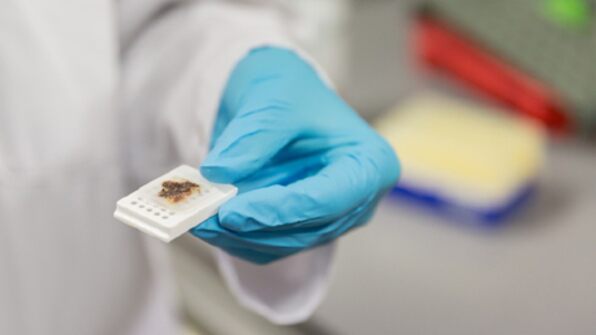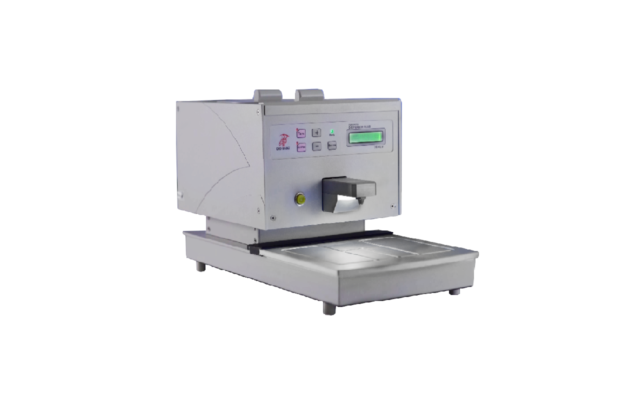Education
Tissue embedding
Tissue embedding
Tissue molding or tissue embedding is the placement of tissue in molten Paraffin so that when the Paraffin hardens, holds the tissue sample firmly in the direction it should be cut.
Special containers are used for embedding, There are different types of containers But usually the parts are L-shaped( Lockhart)molds are used . These molds are made of two pieces of brass or Aluminum metal. When they are placed together, they form a rectangle. It is better to mold on an aluminum plate with dimensions of 0.3 Cm.
Today new technology and new methods present us new & more accurate ways in embedding. For instance today the plastic tissue cassettes are fast coming into use.
In this methods the metal embedding base is placed under the facet of the paraffin dispensing device having a very small volume of paraffin put into it.Then the tissue is located inside the paraffin layer. Finally the plastic tissue cassette is put into the mold & the last part of paraffin is dispensed.
How to do the tissue embedding
- Pour the melted paraffin into the mold with a paraffin dispenser.
- Using a heated forceps , gently place the tissue in the mold, so that no bubbles form and the cutting surface is towards the bottom of the mold.
- put the tissue number on the tissue.
- When the paraffin has cooled completely, immerse the mold under water.
- When the paraffin is completely hard, it should be removed from the mold
Note: There should be more than 3 mm of paraffin on each side of the tissue.
Note: The paraffins used in two stages of immersion and molding are better to be different with each other.It is better to Use pure paraffin for immersion step to remove all the xylene from the tissue sample. And it is better to use a mixture of paraffin and additives for molding stage that they are used to improve crystallinity and flexibility and thus better cutting.
Note: The performance of paraffin is affected by the following variables :
- Melting point (depending on the molecular weight and percentage of additives).
- Degree of polymerization (Stability of additives)
- Operating temperature (Stability in immersion and molding.
Note:
Currently commercial histology paraffins are a mixture of the following components
- Paraffin
- Polymers and hydrocarbon resins increase hardness and support
- Microcrystalline waxes( reduce crystal size, regulate melting point, increase adhesion)
- Adding DMSO (Immersion Improvement)
A study in 2016 showed that a mixture of paraffin and ethylene vinyl acetate (EVA) had a softening temperature similar to paraffin While its physical properties such as compressive strength, elasticity and crystalline intensity increase with increasing EVA.
Optimal environment due to the quality of the sections is obtained by adding 5% by weight of ethylene vinyl acetate to paraffin.
For embedding, we recommend using Paraffin Dispenser Model DS 4Lm+ holding two tanks and one Hot Plate which is designed for the best results in embedding.
Did sabz Paraffin Dispenser for tissue embedding
Tissue Embedding center Model DS 9903
- has a modular system
- has a 5 liter tank for melting paraffin
- has two small tanks with the capacity of 1.5 liter
- cold plate
- electrical heated forceps

 فارسی
فارسی

